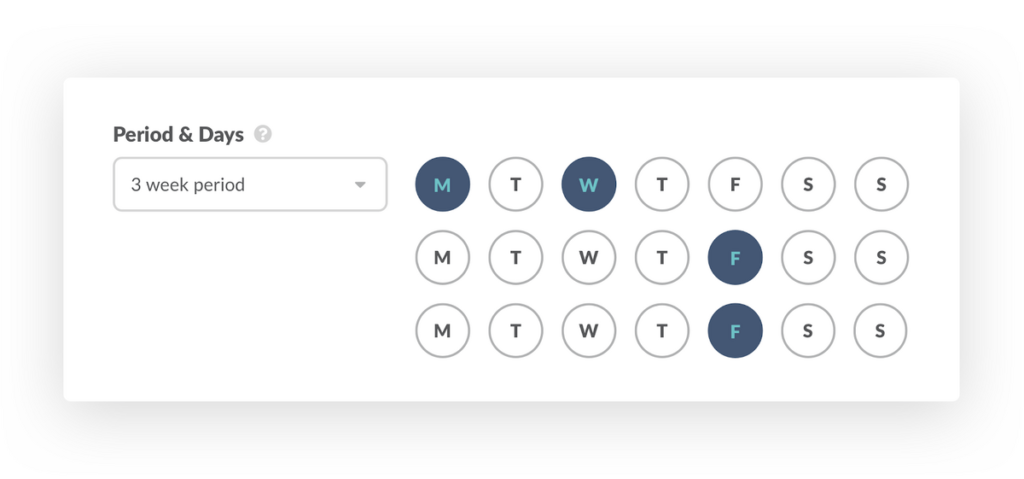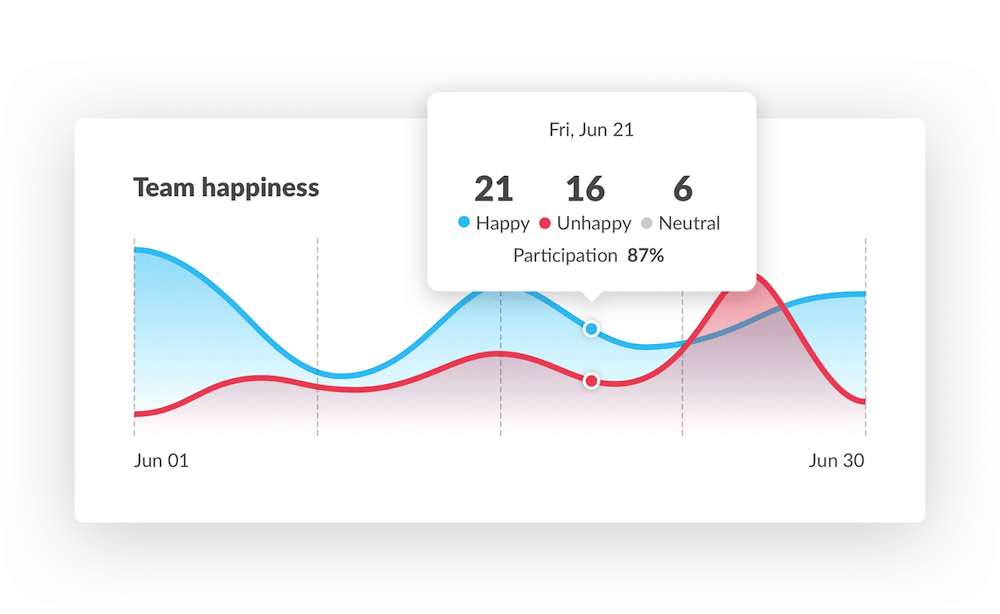Jell is a daily standup and check-in tool that integrates with platforms like Slack, Microsoft Teams, and GitHub. It’s a quality tool from a reputable company, but may not be the right fit for your team.
Today we talk about a Jell alternative — Geekbot. Geekbot is a daily standup and check-in tool that is free for teams of 10 or fewer participants. (If you have more than 10 participants in one month, you pay $2.5 per active user per month.)
In this post, we will show you how to schedule a daily standup using Geekbot. Plus, we cover how to look at data-driven insights with your Geekbot dashboard and what Geekbot customers are saying about our software.
If you’re ready to see how you can use Geekbot for Slack and MS Teams, click here to get started.
How to Run a Daily Standup with Geekbot
A quick note before we begin: Geekbot is primarily used by Scrum teams who want to run asynchronous standups, retrospectives, and polls. But it also has several other use cases. For example, Geekbot has been used by teachers to help with their classroom, and remote teams who wanted to increase team camaraderie (just to name a few examples).
Below, we look at building a daily standup with Geekbot, but again, you can use our service to run any kind of asynchronous meeting, poll, or check-in that your team needs.
Let’s get started.
First, from Geekbot’s templates screen, select “Daily Standup.” In the image below you’ll see other templates we offer, such as “Meeting notes”, “Product Changelog”, and more.

Scheduling Your Daily Standup
With Geekbot, you can pick what days you want your standup to go out and at what frequency.

Just as an example, you can schedule a standup to go out on Monday, Tuesday, and Friday of each week.
You can also create a one-off, non-recurring standup if that’s what you need.
A major game-changer with Geekbot is that our software can automatically factor in each user’s timezone.
Say half of your team is in Eastern Europe and the other half is in the Southwestern United States. That’s roughly a 10 hour time difference. Because Geekbot factors in everyone’s timezone, all of your team members will get their daily standup notification when it’s convenient for them.

This saves you time because you don’t have to figure out everyone’s time zone individually when scheduling the standup (i.e. Send it in 9:00am Eastern European Time for team member #1, 9:00am Pacific Time for team member #2, 9:00am Eastern Time for team member #3, and so on). Geekbot does that for you automatically.
Collecting and Sharing Responses

Once a team member fills out their daily standup responses, Geekbot takes their answers and posts them in a public or private Slack channel.
(When you set up your standup, you can pick which channel you want the responses in. We recommend making a designated channel for standups to help keep communication streamlined).

Automated Follow-Up Reminders
You may wonder, what happens if a team member forgets to fill out their daily standup answers?
This happened to us before we made Geekbot. We had built a web form to help us run asynchronous meetings, but the problem was our team didn’t have the best track record on filling out the daily standup.
So when we created Geekbot, we made sure it would circle back and send follow-up reminder notifications to team members who forgot to fill out their answers.

You can set manual reminders so that every 30 minutes, 1 hour, 2 hours (and so on) Geekbot will follow up with team members who haven’t yet filled out their daily standup. It’s a great way to keep your team on task, without having to personally follow up with everyone.
Plus, you can also use Geekbot’s Smart Reminders feature. This is where Geekbot learns the patterns of each participant’s usual response time. So it follows up with each team member when they’re most likely to respond.
Facilitating Conversation and Solving Blockers
Geekbot helps facilitate value-driven conversations that solve blockers and keep your sprints on track, all without being disruptive.

In the image above, Kate had a blocker that dealt with the status of new landing pages. She tagged Brandon who can help her. Now they can work together in a thread, without derailing the standup or filling the channel with their conversation.
This keeps the rest of your team focused, and helps Kate solve her blocker quickly.
Get Data Driven Insights About Team Happiness, Participation Rate, and More
Daily standups (and other meetings) are treasure troves of data. What is your team currently working on? Are there specific blockers that keep recurring? Are there team members who make a habit of not filling out their standup?
With Geekbot, you get access to a dashboard where you can easily reference and filter through such valuable data.

In the image above, you can see which information is readily available, including:
- Out of office: See who isn’t on the schedule for the week.
- Rebounding: See which team member has filled out their standup after an extended absence.
- Medium debugging time: See how much time your team is spending debugging code
- Participation rate: See how much of your team is filling out their daily standups
- And much more.
Team Happiness: Keep Your Fingers on the Pulse of Company Culture
Geekbot’s daily standup template defaults to 4 questions, the first of which is, “How do you feel today?”

Geekbot analyzes your team’s language for that question (and the language in the rest of the daily standup report), and it then interprets whether the responses are “Happy”, “Unhappy”, or “Neutral”. This information is displayed via a graph, and allows you to get ahead of potential problems.

Conversational Analytics: Get the Right Information Quickly
With Geekbot’s Conversational Analytics feature, you get the info you need in seconds:

This is helpful because after doing dozens (or even hundreds) of daily standups, you’re going to be overwhelmed with the amount of data and information you have at your fingertips.
With Conversational Analytics, you can ask Geekbot specific questions and Geekbot gives you clear answers.
Here’s a list of some of the questions you can ask Geekbot.
- Who has worked on bug fixes since June?
- How is @Jack feeling today?
- How is the team doing this month?
- How long has @Ingrid been working on bug fixes?
- And more.
What Customers Love about Geekbot
Below we look at three different third party review sites to see how teams are using Geekbot, and what they love about it.
- Capterra — 4.9/5 stars, based on 85 user reviews (as of this publication date).
- Trustpilot — 4.8/5 stars, based on 55 user reviews (as of this publication date).
- G2 — 4.6/5 stars, based on 43 reviews (as of this publication date).
Overall, as you can see below, customers really respond well to Geekbot’s UI and UX. It’s easy to use and easy to set up.

A quick note: Alex B.’s review above mentions Geekbot having “no free tier” as a con. This review was published in 2019, which was before we offered our customers a free tier. But now teams of 10 or fewer can use all of Geekbot’s features for free.
As we mentioned above, several types of teams use Geekbot. When we originally made Geekbot we figured it’d be used almost exclusively by remote teams. But as the review below mentions, collocated teams also benefit from using Geekbot.

And, to be expected, customers really love how Geekbot factors in every user’s timezone automatically. This saves your team time, and can help increase participation rate.

Final Thoughts: Choosing Geekbot as a Jell Alternative
If you’re looking for a Jell alternative, Geekbot may be a great fit.

We are an asynchronous meeting software that lets you run everything from daily standups, retrospectives, polls, camaraderie building meetings, and more.
Again, if you’re managing teams of 10 or fewer, then Geekbot is completely free. (And even on our free plan, you still get access to our advanced features like data driven insights, smart reminders, etc.).
If you have more than 10 users using Geekbot in a month, then the plan is $2.5/participant/month if billed annually, and $3/participant/month if billed monthly.
To get started on your free plan (or your free trial if you manage a larger team), click here.
You May Also Like…
- Video Call Downsides & How to Run Better Remote Standups in Slack
- 3 Best Slack Standup Bots (In-Depth Look)
- 7 Best Alternatives to Standuply
Frequently asked questions
Who Leads a Daily Standup?
However, that is only relevant for in-person, synchronous daily standups. When you’re using asynchronous standups, you’re relying on a bot or software to send out the daily standup questions and collect and share responses.
Generally speaking, the Scrum Master makes sure the daily standup happens, but who facilitates the actual standup can depend. Some teams like to have a rotating roster of developers and product owners.
Is the Daily Standup Necessary?
A daily standup helps keep your sprints on track. This is because daily standups let your team identify blockers before they become large bottlenecks that can derail a project.
To make the most out of your daily standup, we recommend that you start running asynchronous daily standups.
By using Geekbot, our asynchronous daily standup tool that integrates with both Slack and Microsoft Teams, you can get the benefits of a standup, without any of the headaches, such as difficult scheduling and long, unproductive meetings.



